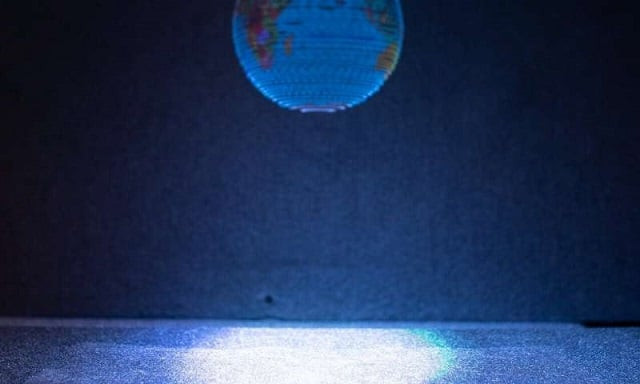From sci-fi to science lab: Holograms you can 'feel'
Scientists in Britain say they can make even more realistic 3D versions

PHOTO: AFP
Now scientists in Britain say they can make even more realistic 3D versions -- a butterfly, a globe, an emoji -- which can be seen with the naked eye, heard and even felt without the need for any virtual reality systems.
Writing in the journal Nature, a team at the University of Sussex in southern England, said technology currently in use can create 3D images but they are slow, short-lived and "most importantly, rely on operating principles that cannot produce tactile and auditive content as well".
Scientists puzzled by really big planet orbiting really little star
To fill in the picture, so to speak, the team created a prototype called Multimodal Acoustic Trap Display (MATD) which "can simultaneously deliver visual, auditory and tactile content".
This uses what is known as "acoustophoresis" -- sound waves that move and manipulate an object, in this case, particles -- to form an image in a small box containing arrays of very small speakers.
"Our system traps a particle acoustically and illuminates it with red, green and blue light to control its colour as it quickly scans the display volume," the team said.
Since the system is based on sound waves, it allows the hologram to be heard and even felt.
One of the scientists, Ryuji Hirayama, explained how this last feature -- so crucial to making the object seem real -- works.
The next generation: mice can reproduce after space stints, study finds
"Even if not audible to us, ultrasound is still a mechanical wave and it carries energy through the air. Our system directs and focuses this energy, which can then stimulate your skin to feel content," Hirayama told AFP by email.
"The feeling of the tactile sensation is like a gently spraying your hand with pressurised air."
The system obviously attracts attention because of the science fiction film backdrop but the team said it could have a wide range of applications, from computing to biomedical procedures.



















COMMENTS
Comments are moderated and generally will be posted if they are on-topic and not abusive.
For more information, please see our Comments FAQ